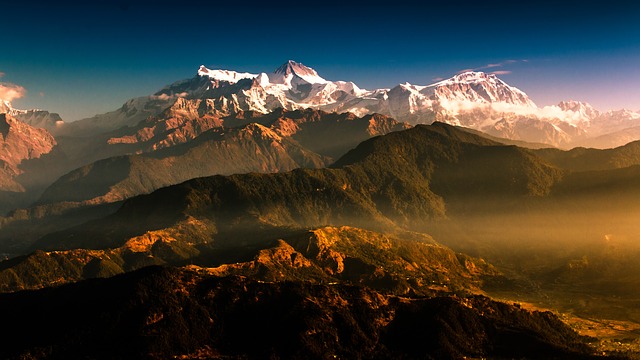The Himalayas are one of the highly dominating geographical features of the country. No other mountain range in the world has impacted the lives of people and molded the destiny of a country like the Himalayas. They are the soul and body of India. This mountain range is very useful for the country due to the below-mentioned significance.

What is the significance of Himalayas?
Its Influence on climate: The Himalayas has been noted for its crucial role in impacting the country’s climate. By their length, direction and high altitude, this huge mountain range effectively seize the summer monsoons that come from the Arabian Sea and Bay of Bengal to result in precipitation in the way of snow or rain.
It serves as a climatic barrier that stops the cold and dry wind coming from areas of Central Asia and delivers rainfall in Northern India by way of prevention of the rain-laden monsoon winds of Indian Ocean.
In the absence of Himalayas, the entire country would have been a barren desert without any precipitation. Its winters would have been a lot severe due to the impact of cold air masses that comes from Central Asia. As per the recent meteorological studies, this mountain range is accountable for dividing the jet stream into branches. This plays a highly important role in bringing monsoons in the country.
A great source of rivers: The Himalayas have been the source for the several notable rivers of the country. Vastly spread snow-fields, an abundance of rainfall and large glaciers serves as the nourishing grounds of the enormous rivers of India. The melted snow in the summer season provides water to the perennial rivers during the dry season. The Himalayan Rivers with hundreds of its tributaries form the basis of living in the entire of North India.
Defense: The Himalayas acts as a fence in the Northern end by shielding the nation from foreign invasions. This mountain range protects India from external invaders since ancient times. They serve as the best mechanism to safeguard people and the country.
Hydroelectricity: The massive power potential of the Himalayan Rivers proves to be highly beneficial for the country. The Himalayan region provides various sites that are useful for the generation of hydroelectricity. There are waterfalls at a few places while dams are built across rivers at other places in this region.
Forest Wealth: The entire range of Himalayas is dense in forest resources. This range shows a series of a vegetal layer from the tropical areas to the Alpine. The forest range at the Himalayas offers fuelwood along with a wider variety of raw materials for all forest-based industries. Different types of medicinal plants are cultivated in this region. Various patches are efficiently concealed and protected with grass that serves as a rich pasture for grazing animals.
Fertile Soil: The rivers, as well as their tributaries, provide huge amounts of salt, slit, and alluvium while descending from the Himalayas. It gets deposited as fertile soil in the plains of North India, thereby making it one of the highly fertile grounds of the world.
Tourism: Due to its amazing healthy environment and scenic beauty, there have been developed several tourist spots in the entire range of Himalayas. The hilly regions offer comfortable and cool climate when the adjacent plains reel under the excruciating heat during hot months of the year.
The Himalayas has been the favorite tourist destination for millions of tourists from all parts of the world. Some of the most admired tourist spots are Srinagar, Dharamshala, Dalhousie, Shimla, Chamba, Manali, Kulu, Nainital, Mussoorie, Almora, Ranikhet, Mirik, Darjeeling, and Gangtok.
Agriculture: The Himalayas also provide extensive lands for agriculture. The slopes of these mountains are used for cultivation of crops such as rice, wheat, potatoes, maize, ginger, tea, and ginger. In addition to it, several types of fruits are also cultivated at this place such as pears, grapes, apples, walnut, mulberry, peaches, cherries, and apricot.
Pilgrimage: Besides places of tourism, the Himalayas also boasts for its sanctified memorials and pilgrimage that are known to be the home of the Gods. Some of these shrines are Amarnath, Kailas, Kedamath, Badrinath, Jwalaji, Vaishnu Devi, Gangotri, Uttarkashi, and Yamunotri.
Minerals: The Himalayan region also contains several treasured minerals that have the vast potential of mineral oil present in its tertiary rocks. Some of these minerals are coal, lead, copper, nickel, zinc, antimony, cobalt, gold, tungsten, limestone, silver, precious and semi-precious stones, magnesite and gypsum.
Also read: What is the importance of the sun?
Conclusion
The Himalayas are seen to be very beneficial to India in countless ways. With all the above benefits, the Himalayas establish national mountain system of the country.